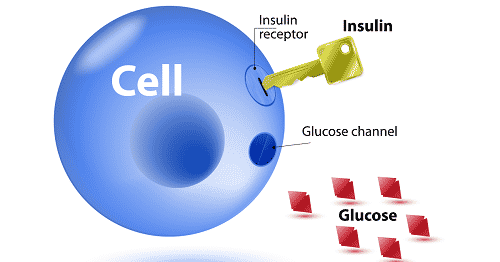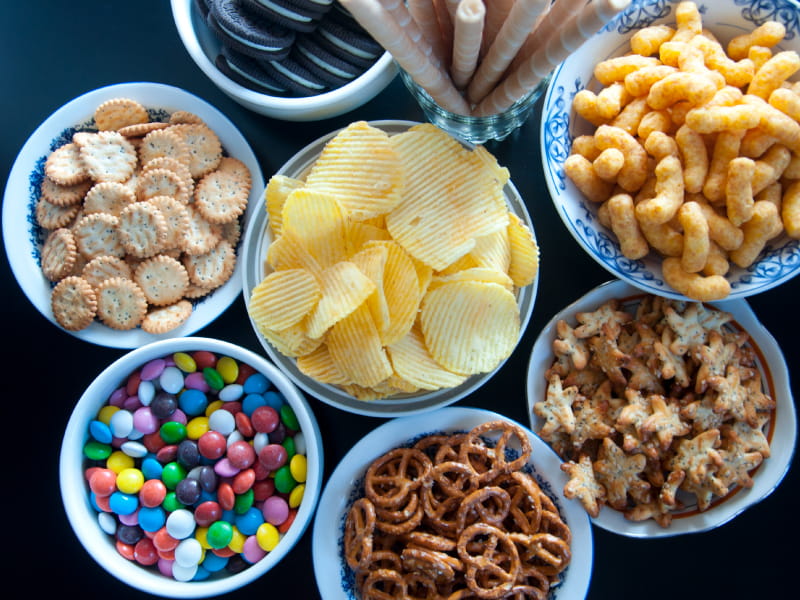In this article:

Image courtesy of nourishtothrive.com.au
Blood sugar spikes, those sudden surges in blood glucose levels post-meal, are more than just a temporary fluctuation; they are a window into the intricate dance between the food we consume and our body’s metabolic response. Understanding the way we utilize sugar for energy, store it as fat, or just let it linger in our blood causing havoc to our health, is key to redefine our lifestyle in order to be more healthy and longeve.
When our sugar blood level are chronically high because of poor diet and physical inactivity, insulin, the key to our cells’ glucose gates, becomes scarce or loses its efficacy. The result? Glucose, like an uninvited guest, loiters in the bloodstream, escalating to hyperglycemia, a state of elevated blood sugar levels that, if left unchecked, can become the prologue to a series of health complications.
CHAIN REACTION OF RISKS
Imagine a lock changing its shape, no longer recognizing its key, leaving glucose stranded outside the cellular doors.
The tale of persistent high blood sugar and insulin levels serves as a cautionary reminder about cellular resistance to insulin. Imagine a lock changing its shape, no longer recognizing its key, leaving glucose stranded outside the cellular doors. This resistance doesn’t happen overnight; it’s a gradual shift fueled by three lifestyle factors: overindulgence in high-glycemic foods, a sedentary lifestyle, and the omnipresent stress of modern life. These factors contribute to insulin resistance—a widespread condition in our affluent, indulgent world—that wreaks havoc on people’s health. When cells resist insulin’s action, glucose struggles to enter, resulting in elevated blood sugar levels. Consistently high blood sugar levels lead to a plethora of health problems. Here are a few examples.
- Advanced Glycation End-products (AGEs): Excessive glucose in the bloodstream contributes to the formation of AGEs—harmful compounds that can damage proteins, lipids, and nucleic acids. Read our full article to know more about this: AGEs and the Aging Process: A Sweet and Bitter Connection
- Inflammation: Chronic high blood sugar triggers inflammation throughout the body, linked to several age-related diseases, including cardiovascular disease high cholesterol levels, dementia, Alzheimer’s, Parkinson’s, rheumatoid arthritis, diabetes, and obesity.
- Nerve Damage: Over time, elevated glucose levels harm nerves, leading to conditions like peripheral neuropathy. Symptoms include numbness, tingling, pain, and weakness, often in the hands and feet.
- Kidney Damage: Filtering high glucose levels strains the kidneys, potentially causing kidney failure.
- Vision Problems: Persistent high blood sugar can lead to eye conditions like diabetic retinopathy, impairing vision or causing blindness.
- Cardiovascular Disease: Prolonged high blood sugar increases the risk of heart disease and stroke.
- Skin Conditions: Elevated glucose affects the skin, leading to issues such as infections and poor wound healing.
- Dental Issues: High blood sugar raises the risk of gum disease and other oral health problems.
- Overall Health Deterioration: Long-term high blood sugar impacts various aspects of health, reducing quality of life and increasing health complications.
Recognizing the harbingers of blood sugar spikes is pivotal. Symptoms such as fatigue, an unquenchable thirst, and frequent trips to the restroom are the body’s distress signals, urging for a change in course. Heeding these signs is not merely about managing the present; it’s about safeguarding the future. It’s about preventing the spikes from becoming the norm, which is essential for preserving long-term wellness.
HOW TO AVOID SUGAR SPIKES

Image courtesy of American Heart Association
REAL FOOD VS “FAKE” FOOD
First and foremost, avoid “fake” food: food that has been cleared of all its nutritional properties. An example of “fake”, or processed food, is refined white flour, while real food consists of cereals like wheat grains. Processed food is real food that has been deprived of essential nutrients, such as fiber and vitamins. What remains are sugars and additives that, while extending their shelf life and making them addictive, ultimately contribute to increased cravings.
Cereal grains are rich in fibers, minerals, and many other healthy substances. Refined flour is cereals that have been stripped of all their nutritional value, leaving only easily digestible carbohydrates.
Of course, sugar is another example of processed food, as well as fruit juices. Other examples include bakery food that is not made with whole grains, chips, fries, and, of course, most packaged desserts. It is essential to resist sugary foods, alcohol, and ultra-processed items in order to maintain stable blood sugar levels.
If you want more suggestion for a healthy, anti-inflammatory diet, read out full article: The Easiest Way to Eat Healthy
THE BLOOD SUGAR ROLLERCOASTER

It’s a common misconception that when hunger strikes, reaching for a quick snack like chips or sweets will satisfy the craving. However, these types of foods can lead to a rapid increase in blood sugar levels, which is often followed by a crash, leaving you feeling hungry again shortly after. This cycle of sugar spikes can confuse your body’s hunger signals, making it challenging to distinguish true hunger from a simple craving.
Recent studies have shown that people who consume higher amounts of sugar for breakfast feel hungrier and tend to eat more throughout the day compared to those who limit their sugar intake.
Opting for balanced meals with a mix of protein, fiber, and healthy fats can help maintain stable blood sugar levels and provide longer-lasting satiety.

DIETARY ALLIES FOR BALANCE
Incorporate fibers, proteins, and healthy fats into your meals to slow digestion and combat sugar spikes. Polyphenols, found in vegetables, fruits, and certain spices, are also key in regulating blood sugar, as they seem to be able to increase your insulin sensitivity. Also, lab studies suggest that polyphenols can increase the number or sensitivity of glucose transporters on muscles. This means that glucose is moved from your blood into your muscles more efficiently.
Oats, buckwheat, blueberries, black currant and cinnamon seem to be particularly effective at this.
Also, drinking something acid, like water and lemon or vinegar right before eating a carb-rich meal will reduce the absorption of sugar.
Last but not least, for all the pasta lovers: pasta “al dente“, that is, still a little crunchy, increases the glycemic level much less than overcooked pasta. Also, whenever possible, opt for pasta made with durum wheat or wholewheat grains.
THE ROLE OF TIMING
Consuming a balanced meal followed by mild physical activity, like a 15 minutes walk, can help achieve blood sugar equilibrium and promote post-meal vitality.
HOW TO ORGANIZE YOUR MEALS
Another strategy to decrease the risk of blood spikes is reorganizing your meals in the following order:
- Start with Fiber-Rich Foods: Begin your meal with fiber-rich foods such as salads and vegetables. These will help fill you up and provide essential nutrients.
- Next, Include Fats and Proteins: Incorporate fats and proteins into your meal. These macronutrients can quickly satisfy your hunger and provide sustained energy.
- Save Carbohydrate-Rich Foods for Last: Finally, consume carbohydrate-rich foods like cereals or fruits. By eating them last, you can better manage blood sugar levels.
For more tips on maintaining health and youthfulness at any age, explore our comprehensive article:
The 10 most efficient, scientifically proven habits to stay young and fit at any age
References:
- Prada M, Saraiva M, Garrido MV, Sério A, Teixeira A, Lopes D, Silva DA, Rodrigues DL. Perceived Associations between Excessive Sugar Intake and Health Conditions. Nutrients. 2022 Feb 2;14(3):640. doi: 10.3390/nu14030640. PMID: 35276998; PMCID: PMC8839066.
- Dandona P, Aljada A, Bandyopadhyay A. Inflammation: the link between insulin resistance, obesity and diabetes. Trends Immunol. 2004;25(1):4–7.
- Liu W, Hua L, Liu WF, Song HL, Dai XW, Yang JK. The prevalence of glucose metabolism disturbances in Chinese Muslims and possible risk factors: a study from northwest China. Arq Bras Endocrinol Metabol. 2014;58(7):715–723.
- Chen SJ, Yen CH, Huang YC, Lee BJ, Hsia S, Lin PT. Relationships between inflammation, adiponectin, and oxidative stress in metabolic syndrome. PLoS One. 2012;7(9):e45693.
- Cirillo P, Sautin YY, Kanellis J, Kang DH, Gesualdo L, Nakagawa T, et al. Systemic inflammation, metabolic syndrome and progressive renal disease. Nephrol Dial Transplant. 2009;24(5):1384–7.
- Ellulu MS, Patimah I, Khaza’ai H, Rahmat A, Abed Y. Obesity and inflammation: the linking mechanism and the complications. Arch Med Sci. 2017;13(4):851–63.
- WHO. Obesity: preventing and managing the global epidemic. Report of a WHO Consultation, WHO Technical Report Series 894; 2000. p. 252.
- Abdulazeez SS, Ponnusamy P (2016) Report: antioxidant and hypoglycemic activity of strawberry fruit extracts against alloxan induced diabetes in rats. Pak J Pharm Sci 29:255–260
-
Carroll HA, Chen YC, Templeman IS, Wharton P, Reeves S, Trim WV, Chowdhury EA, Brunstrom JM, Rogers PJ, Thompson D, James LJ, Johnson L, Betts JA. Effect of Plain Versus Sugar-Sweetened Breakfast on Energy Balance and Metabolic Health: A Randomized Crossover Trial. Obesity (Silver Spring). 2020 Apr;28(4):740-748. doi: 10.1002/oby.22757. Epub 2020 Feb 28. Erratum in: Obesity (Silver Spring). 2020 Jun;28(6):1157. PMID: 32108442; PMCID: PMC7154643.
- Kim, Y.; Keogh, J.B.; Clifton, P.M. Polyphenols and Glycemic Control. Nutrients 2016, 8, 17. https://doi.org/10.3390/nu8010017
- Kurimoto Y, Shibayama Y, Inoue S, Soga M, Takikawa M, Ito C, Nanba F, Yoshida T, Yamashita Y, Ashida H, Tsuda T. Black soybean seed coat extract ameliorates hyperglycemia and insulin sensitivity via the activation of AMP-activated protein kinase in diabetic mice. J Agric Food Chem. 2013 Jun 12;61(23):5558-64. doi: 10.1021/jf401190y. Epub 2013 May 29. PMID: 23683106.
- Purintrapiban J, Suttajit M, Forsberg NE. Differential activation of glucose transport in cultured muscle cells by polyphenolic compounds from Canna indica L. Root. Biol Pharm Bull. 2006 Oct;29(10):1995-8. doi: 10.1248/bpb.29.1995. PMID: 17015939.
- Siddiqui FJ, Assam PN, de Souza NN, Sultana R, Dalan R, Chan ES. Diabetes Control: Is Vinegar a Promising Candidate to Help Achieve Targets? J Evid Based Integr Med. 2018 Jan-Dec;23:2156587217753004. doi: 10.1177/2156587217753004. PMID: 29756472; PMCID: PMC5954571.
Disclaimer
Consult a health professional before making significant changes to your diet, exercise routine, or supplement regimen. The information provided in this blog is intended to convey the latest scientific research in an accessible manner. However, it does not replace the advice of a medical professional. Take your health conditions into account and consult a qualified healthcare provider to ensure that the decisions you make are safe and appropriate for your specific health needs. Ultimately, you are responsible for your own health and well-being.






Your blog is a breath of fresh air in the often stagnant world of online content. Your thoughtful analysis and insightful commentary never fail to leave a lasting impression. Thank you for sharing your wisdom with us.
Thank you
You can certainly see your enthusiasm within the paintings you write. The sector hopes for more passionate writers like you who are not afraid to say how they believe. Always go after your heart.